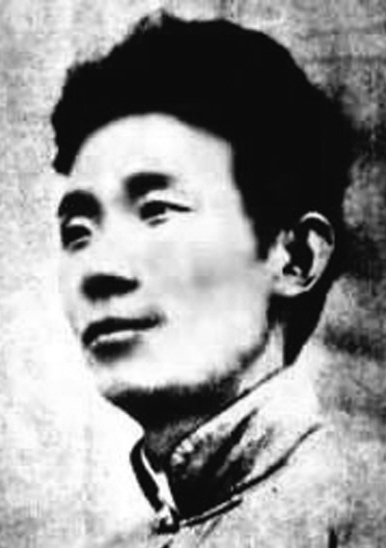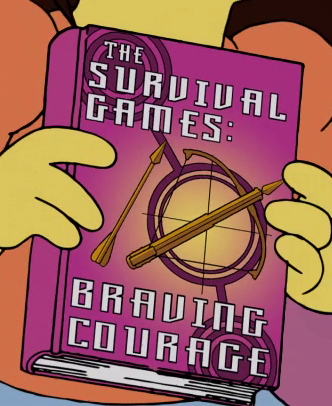Superhero films are at a height of popularity at the moment, with many superhero movies launching huge franchises. The most successful ones so far have been Nolan’s “Dark Knight”- trilogy and Joss Whedon’s “The Avengers” and many of the myriad of film adaptations of this comic book genre go on to get cinematic sequels. Often when a sequel is a particularly big flop, there will be an attempt to start a new franchise by re-telling the Hero’s tale on the big screen. In other words, a re-boot is made. Case in point was with Marvel Comic’s Spiderman.
Sam Raimi directed Spiderman’s debut film, “Spiderman” (2002) which held an enormous charm with its straightforward, effortless, and humorous storyline intertwined with a romantic tone and carried through with a stable of charismatic actors. Of special note was the pivot point of Tobey Maguire as the masked hero. The first of the Raimi interpreted Spiderman franchise was followed by “Spiderman 2” (2004) which was an interesting exploration of the cost of being a hero which pursued and elaborated the darker logic of the first film while never losing its own sense of charm and wit. The third Spiderman film however fell prey to a “upmanship” mentality regarding its own trajectory of films and became a total catastrophe, having too many plotlines and undeveloped characters, including an infamously inane dance scene (which everyone has made fun of, so I won’t comment on it!) performed by the main character.
This year has been witness to the reforming of this floundering series with the release and re-booted consideration of the hero with the film “The Amazing Spiderman”, directed by Marc Webb.
The film details Spiderman’s path to becoming a superhero with the same classic structure featured in the comics: Peter Parker, an outcast nerdy teenage boy, is bitten by a rather unusual spider and therefore gains powers such as the astonishing ability to stick to any surface, a pre-natural super strength, a intuitive sense of his surroundings, an extraordinary sense of balance, etc. Peter at first uses his newly acquired powers for his own personal amusement and benefit, but after his beloved Uncle Ben dies at the hands of a criminal (who Peter could have stopped during a previous crime) Peter rethinks his attitude to his powers and, after some growing up, which is a staple for this genre, becomes the mask vigilante Spiderman.
The new filmic incarnation of the Spiderman tale, following the original comic book title where the character was granted his own franchise, is called the “The Amazing Spiderman” and, with the logic of the reboot, infuses the story with some few alterations to Peter Parkers narrative in order to rejuvenate the tale and bring the franchise back from the Spiderman 3 pitfall.
“The Amazing Spiderman” stars Andrew Garfield, who is utterly fantastic as Peter and Spiderman. Garfield puts everything he has into this role, which results in a deliciously engaging performance. As Peter Parker he perfectly embodies the complex nature of teenage years: he’s insecure, he’s irritating, he’s wrapped up in his own world, and he’s sympathetic and adorable, all at once. As the masked vigilante, “The Amazing Spiderman” tones up the snarky and wisecracking nature of Spiderman a lot more than Tobey Maguire’s interpretation; this seems more true to the comics and the general ambiance of the character. In this adaption, Peter also invents the spider-like super-webs weapon (instead of just shooting them out of his wrist which is a feature of Spiderman as portrayed in Sam Ramie’s films) which animates the character with more of a academic and scientific inclination and gives foundation to narrative flows within the story line.
Tobey Maguire’s Peter was more sweet and kind, than the manifestation of Garfield’s character, but feels less connected with the reality of complexity the environs of New York entails and the weight of criminality infesting the city. In Raimi’s films, Spiderman’s sense of humor comes from his small comments of how much trouble he always finds himself in, not as a wisecracking hero, while Garfield uses this aspect of the “spidey” character to confront evil and violence in the only rational way (i.e. laughing). All of this is a construction of Maguire to play Spiderman as a pivot to tone up the heroic aspects of the masked vigilante while Garfield’s tone is to pull the characterization away from the heroic to the normal . Since Toby Maguire was in fact so good at doing a heroic and believable individual, one thrust into the role, but ascending to it requirements , it seems impossible for anyone to overshadow his performance. But Garfield succeeds, and succeeds well.
Garfield is what makes this movie work, since the viewer truly wants to see what happens to this charming young man. It’s good that the protagonist is engaging in “The Amazing Spiderman”, since neither the villain nor the love interest is. The villain is the one-armed scientist Dr. Curt Connors (Rhys Ifans). Dr. Connors is using the genetic code of lizard’s regenerative capacities to re-create limbs on mice, hoping to be able to do the same on humans some day. After a series of complex tragic events (which I won’t go into here), he is forced to take an untested doze of the genetic mutations and turns himself unwittingly into The Lizard, which affects his body leaving his mind intact. Ifans tries his best, and actually there is a lot of potential in this villain. The writing and acting does capture the sorrow and desperation of Dr. Connor’s character, but never really depicts Dr. Connor as a person who would willingly hurt someone. His character is depicted as continually nice and, even as a Monster Lizard, as overtly rational and humane, making us wonder why he would become the villain we find in the Narrative.
In The Lizards first scene, you see him cause destruction on a bridge while trying to stop a massive humanitarian and criminal act and only causes the damage due to his lack of understanding regarding his strength. In the scene, the writing gives a good explanation for his actions. However, near the end of the film, The Lizard makes some very extreme decisions and seeks out to do horrible things to the entire city. This diversion to criminality veers drastically from the logic of the character we have been presented with, since Dr. Connor is shown to be a man of science whose major ambition is to help others, and he has never shown any dislike for humans or human nature in anyway. When The Lizard becomes a real villain, it is not believable or has any credibility at all. Needless to say this lack is fatal flaw for the development of a villain, let alone a super-villain.
Also Emma Stone was pretty boring as Gwen Stacy. Ms. Stone is trying her best, but her character just wasn’t interesting.
But no doubt the worst part of this film is the scene where Peter first starts to realize he has superpowers. After being bitten by a genetically mutated spider, Peter travels back home, sleeping on the subway. After some hassle, Peter accidentally spills some beer on a woman’s shirt. He attempts an apology by saying sorry and laying his hand on her shoulder. However, due to his now emerging spider superpowers, he can’t peel his hand of off the woman’s shoulder. In a panicked state he yanks his hand forcefully away from the woman along with ripping off the woman’s blouse. The men around the scene proceed to attack Peter, only for him to discover more powers by jumping to the ceiling and beating the men senseless. The problem is that even if the men were being violent, Peter did from their point of view rip a woman’s clothing off without her permission – something that in all reason made them quite upset and willing to protect the woman. Even if from the audience’s point of view, Peter ripped a woman’s clothing off by accident, his action was none the less a form of aggressive behavior or at least a crime though accidental. In either way, the writers had decided to write in a scene where Peter commits a sexual assault. The scene plays out like an accident, but there is no going around the fact that the writers thought a good introduction to Peter’s superpowers was having him rip a blouse of an unwilling woman. Not to mention the fact that the scene is mostly played for laughs. The scene gives off the vibe that the writers don’t mind exploiting major problems that many women have to face, such as sexual harassment and assault, for the sake of developing the protagonist’s fate.
The scene is also bizarrely infantile. Even if we can forego the strangely aggressive vibe of the scene, we are still left with the first presentation of the Spiderpowers as making it able to gawk at a scantly clothed woman. Considering how “The Amazing Spiderman” was meant to be a more adult and serious take on the Spiderman character, a scene like this contradicts that statement.
So while some parts of the film felt like they were written under infantile motivations, other scenes were done with much tenderness and cleverness. Spiderman’s first heroic act consists of him saving a small child from dying from the horrible traffic accidents the Lizard caused. The scene follows the classical element of having the little boy trapped in the car as a representation for vulnerability, which leads to Spiderman’s (who’s previously used his powers for selfish reasons) change of heart. What’s new is that the writers not only have Spiderman use his powers to save the child, but Spiderman also uses psychological encouragement to make the boy braver and therefore easier to save. The scene is fairly emotional and exciting. It is puzzling to see such a contrast to the scene where Spiderman first discovers his powers. While the scene in the subway felt juvenile and offensive, the rescue of the child is captivating and thrilling. The contrast is extreme, which bakes the question of how the writers could zigzag like this.
Some other complaints worth mentioning are the depiction of Aunt May (Sally Field). Her role was ridiculously down played, making it almost seem like her and Peter had no connection. This is unfortunate, since, after uncle Ben’s death, the two are suppose to become very close and Aunt May is the loving caretaker Peter needs and loves. In Sam Raimi’s films, and what I have understood from some comics I’ve looked at, Aunt May is suppose to be very sweet and kind, but also a little tough. In “The Amazing Spiderman”, the audience does get the feel that Aunt May is sweet, but her tough side is totally ignored. The result is then a very bland overly kind caretaker typecast, instead of the interesting full-blooded character.
It is also worth mentioning that the school bully at Peter’s High School is made into a more three dimensional person, in this version of the Spiderman film canon, instead of the classic brute, which is a magnificent plus to the film. Also Denis Leary as Gwen’s father and police chief did a solid performance.
This film was good, but had an assortment of titanic problems. However, a sequel will be much anticipated.




















Oh my goodness! Impressive article dude! Many thanks, However I am encountering difficulties with your RSS.
I don’t know why I cannot join it. Is there anybody having the same RSS problems? Anyone who knows the solution will you kindly respond? Thanks!!
Thank you for liking my article. On the RSS, that’s unfortunate… I think you should go to WordPress.com, they have a section helping with difficulties one might be having.
Take care, Maaretta